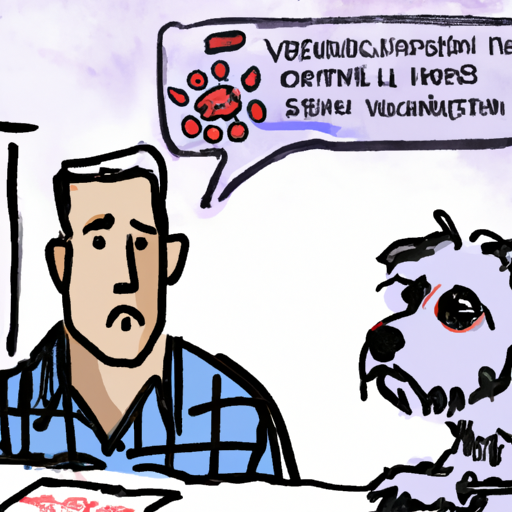As a caregiver, it’s important to know about the various health issues that can affect your furry friend. In this article, we will focus on one such issue that can often be overlooked: Salmonella. We will explore how to recognize the signs, what treatments are available, and how to prevent it.
What is Salmonella?
Salmonella is a type of bacteria that can cause infection in dogs. It’s often associated with contaminated food, but it can also be spread through contact with infected animals or fecal matter. It’s essential to know the signs of a Salmonella infection as early detection can make a significant difference in treatment outcomes.
- Common symptoms include vomiting, diarrhea, fever, and loss of appetite.
- More severe symptoms can include lethargy, dehydration, and septicemia (blood infection).
How is Salmonella Diagnosed in Dogs?
If your dog is showing any of the symptoms mentioned above, it’s crucial to get them to a vet as soon as possible. Here’s what you can expect from the diagnosis process:
- Clinical Examination: The vet will do a thorough physical examination to assess your dog’s overall health and to check for any physical signs of infection.
- Laboratory Tests: The vet will likely take a stool sample for testing. In some cases, they may also take a blood sample.
Treatment Options for Dogs with Salmonella
The primary goal of treatment is to manage the symptoms and help your dog’s immune system fight off the infection. Here’s what the treatment plan might look like:
- Fluid Therapy: Dehydration is a common problem in dogs with Salmonella, so fluid therapy is often necessary. This includes IV fluids to help rehydrate your dog and restore electrolyte balance.
- Antibiotics: In severe cases, antibiotics may be prescribed to help fight off the infection.
- Dietary Changes: Your vet might recommend a bland diet to help ease your dog’s gastrointestinal symptoms.
How to Prevent Salmonella in Dogs?
Preventing Salmonella is often easier than treating it. Here are some steps you can take to reduce your dog’s risk of infection:
- Avoid feeding your dog raw or undercooked meat.
- Keep your dog away from garbage and compost piles.
- Clean up after your dog promptly and properly.
FAQs on Salmonella in Dogs
Q: Can humans get Salmonella from dogs?
A: Yes, Salmonella is a zoonotic disease, which means it can be transmitted from animals to humans. Always wash your hands after cleaning up after your dog.
Q: Can my dog get Salmonella from dog food?
A: Yes, especially if the food is raw or undercooked. Always ensure to cook your dog’s food thoroughly and keep it properly stored.
Q: How long does it take for a dog to recover from Salmonella?
A: It can take anywhere from a few days to a couple of weeks, depending on the severity of the infection and the dog’s overall health.
Remember, your role as a caregiver is to ensure your pet’s well-being. Stay informed, stay vigilant, and your furry friend will thank you.



